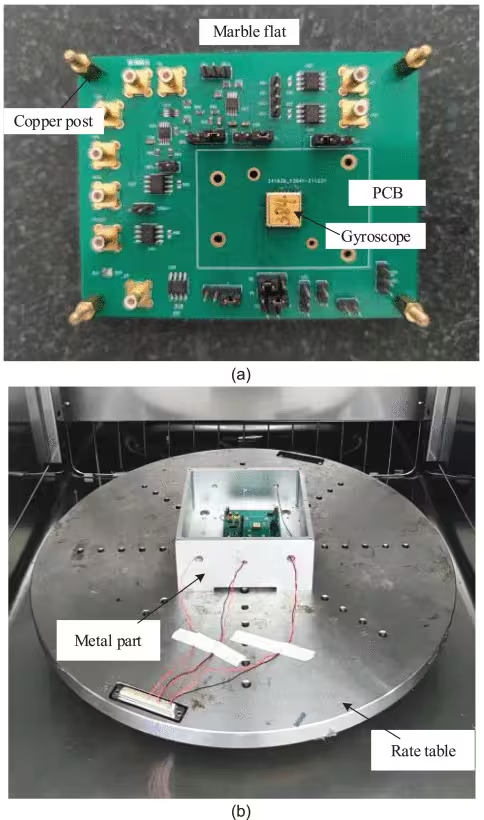Exploring and Identifying Bias-Instability Noise Sources in Mode-Split MEMS Gyroscopes Based on Electrostatic Frequency Tuning
Small size, shock resistance, low cost, and high reliability make MEMS-based gyroscopes useful in various industries like aviation, weapons guidance, and mining. However, the noise level affects the accuracy and precision crucial for applications. The three main types of noise in the gyro output signal that are angle random walk (ARW), bias instability (BIS), and rate random walk (RRW).
The paper presents the MEMS gyroscope based on the tuning fork-type vibrating gyroscope (TFG) design. Its control system architecture has a closed drive loop and an open sense loop. In the closed drive loop, the drive front end converts the MEMS resonator's motional current signal into an AC voltage signal. This signal and the generated DC error signal enable the self-excited closed-loop drive. In the open-loop system, the sense front end detects the motion velocity of the gyro's sense mode and translates it into two voltage signals.
Phase-sensitive demodulation in the sense loop significantly impacts the gyro's BIS. This results in 1/f noise from the drive amplitude and electrostatic frequency-tuning voltage (EFT voltage), which are associated with zero-state output. Further, during the gyro's operation, i.e., non-zero state, the angular rate stimulus (change in angular velocity) also contributes to the BIS.
The ARW sources can be classified into multiplicative and additive noise sources. Interface circuit noise and mechanical thermal noise are in the category of additive noise sources. Drive amplitude noise and EFT voltage noise are the two types of multiplicate noise sources.
A system-level noise model is constructed in Simulink and analyzed in the time domain, with the cutoff frequency of 10 Hz and the 1/f noise and white noise injections. Further, the model simulates the four white noise sources, illustrating their contribution to the ARW of the zero-rate output signal with different frequency splits (i.e., the frequency difference between the gyro's drive mode and sense mode).
Researchers found that mechanical thermal and drive amplitude noise is low, while EFT voltage and interface circuit noise contribute to the ARW. The theoretical curve of the ARW for the zero-rate output signal has a minimum point with a frequency difference of 96 Hz, indicating that the noise level of the interface circuit determines the maximum gyro frequency split.
The experimental study examines the noise levels of MEMS gyroscopes to find their impact on the zero-rate output signal. The study finds that the BIS of the zero-rate output signal (ZBIS) of the system is mainly determined by the drive amplitude noise source, demodulation phase noise, and SF instability due to EFT voltage noise. The ARW and BIS of a MEMS gyro determine the adjustable range of the frequency split. The gyroscope achieved an ARW of 0.009◦/√hr. and a BIS of 0.17◦/h with a frequency split of 110 Hz.
The proposed system-level noise model reveals the transfer mechanism of electrostatic frequency-tuning voltage noise, which alters the SF (scale factor) and demodulated phase and converts it to gyro zero-rate output under quadrature coupling or angular rate stimulus.




